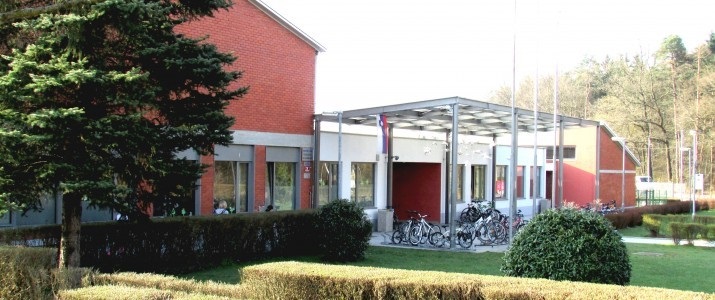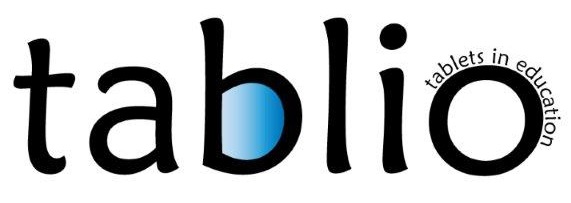Improvement of pupils’ speaking skills in native and foreign languages
Educational analysis

Description
Primary school Miklavž na Dravskem polju is located in the suburbs of Slovenian second largest city Maribor and has four units: central school in the town of Miklavž na Dravskem polju, subsidiary school in the town of Dobrovce, childcare unit (kindergarten) in the town of Miklavž na Dravskem polju, and subsidiary of childcare unit in the town of Dobrovce.

In the school year 2017/18 the central school and the subsidiary schools were attended by 655 pupils aged from 6 to 15 years. The primary school program was carried out by 54 pedagogical workers.
The school offers a wide range of compulsory, additional and extracurricular activities in the form of supplementary and additional classes, various interest activities, expanded program, as well as extended stay and morning care. They also have special workshops for gifted pupils. At the same time, the school is collaborating with colleges and is a teaching school for future teachers.
Children with special needs are also enrolled in the regular primary school. Pupils with different deficiencies, obstacles and disabilities belong in this heterogenic group of children. For these pupils, the school provides additional professional help, carried out by a special needs teacher, pedagogues, two speech therapists and teachers. In the school year 2017/18, 33 pupils with placement orders attended the school. Pupils with deficiencies in individual areas of learnings, speech-language disorders, long-term sick pupils, physically impaired pupils, visually impaired pupils and pupils with autistic and emotional disorders, are going to the school. For each special needs pupil, an expert group at the school designs, monitors and evaluates the individualized education program.
The school strives to establish an optimal learning environment for each individual pupil. Encouraging and maintaining pupil’s motivation for learning, providing diverse learning opportunities, developing strategies for independent, critical thinking, and living in a community. They emphasize the importance of project work and active learning, where the teachers become guides, mentors and moderators. They promote innovative and creative approaches to working with pupils, parents and colleagues, the use of modern communication and information means, and individualization and differentiation of educational work.
The school is generally technologically well equipped, with strong wi-fi, interactive boards, projectors and modern computer classroom. Nevertheless, there were only 5 available tablets at the school until recently. That is why the teachers of upper grades who wanted to use tablets in the classroom used smart phones and tablets of the pupils (BYOD system). However, the school came into conflict with interests of the parents, who did not support the idea of using smartphones during class. In the school year 2017/18, the school then additionally acquired 10 new tablets. 15 tablets are now available, which is still not enough for a school with more than 500 pupils, as teachers find it difficult to find free terms for using tablets in their classes. Also, 15 tablets do not allow individual work in classrooms with 24 pupils.
WORK OF THE TEACHER DESIGN TEAM (TDT)

In the school year 2017/18, 3 teacher design teams (TDT) were established at the school.
The second teacher design team consisted of: two English teachers, a Slovene teacher, a student of English and a representative of the INUK Institute. The team met once a month.
At the first meeting, the team analyzed challenges that the teachers face during class. The teachers noted that the pupils’ communication skills are poorly developed, that they have problems expressing their thoughts, both in everyday life and in public performances, and consequently do not know how to collaborate well. At the same time, the curriculum focuses primarily on acquiring theoretical knowledge and less on acquiring practical speech experience. In oral presentations, some pupils suffer from stage fright due to lack of experience, and some are afraid of not performing well or getting a bad grade. Additional issue for some pupils is also a poor knowledge of native or foreign language. At the same time, the teachers noticed that pupils have problems with personal contact, are avoiding it, and find it much easier to communicate through various ICT devices, because such form of communication is less personal.
The team thus set the following goals:
- gradual improvement of pupils’ speech abilities, both in daily communication and in oral presentations with the help of ICT,
- to integrate theory (grammar) with the use of it in speech communication, and providing the pupils with more opportunities for practicing one-way or multi-way communication in lessons of Slovene and English,
- to improve pupil collaboration.
Within the TDT, the teachers developed a number of different solutions. English teacher Špela Mesarič, who previously used tablets during lessons only for research and finding different sources online, focused mainly on improving pupils’ oral presentations through ICT.
The teacher decided to allow eight-graders who needed to give oral presentations to have an interactive presentation. The pupils who wanted to do so, were allowed to prepare an interactive presentation by themselves or with a partner at home using the Piccollage and Thinglink applications. They searched for photos online, made a collage from the photos using the Piccollage application, and then added different multimedia elements to the collage or the photograph in the Thinglink application, from additional photographs, own or downloaded video and audio recordings, to various textual description.
Theme of the oral presentation was My Dream City and followed a subject unit from the textbook, so the presentation had to include assimilated vocabulary from the subject unit. Preparation for the interactive presentation helped the pupils to prepare for their assignments, while the interactive presentation at the same time provided weaker pupils with necessary support when giving the presentation and reduced stage fright of all the pupils.

The teacher said all pupils enjoyed such form of work. The pupils especially liked the theme of the oral presentation, because they could incorporate their imagination into the presentation, and freely choose the images and other materials as they liked. “Also, the presentation was useful for assimilation and reinforcement of new vocabulary, and encouraged pupils’ spontaneous speech in a foreign language,” adds the teacher.

The generation of eight-graders with which the teacher performed this activity is considered very vivacious and problematic. Nevertheless, “the pupils were actively involved in the activity, because they enjoy using tablets,” the teacher adds.

Teacher of Slovene Anita Babič focused mostly on encouraging daily one-way or multi-way communication and collaboration among pupils when designing her solution. Before that, teacher Anita Babič used tablets or smartphones of the pupils occasionally in her classes, because there were not enough tablets at the school. Most often the pupils used phones and tablets to search for information, data, looking through headwords in the Slovene Literary Language Dictionary, preparing oral presentations or solving literary assignments here they searched for information about authors on the internet.
This time, she decided to use the Toontastic application, which is a storytelling application. She tested the activity in a 6. grade in which the pupils are very different from one another, especially in abilities, plus it is very difficult to motivate them for work.
Before performing the activity, the class discussed the Ugly Duckling fairytale that all the pupils know. They talked about different views on the fairytale, including the acceptance of difference. Then the pupils made their own story in the Toontastic application on the subject of acceptance of difference, where they had to consider the drama triangle and lend a voice to characters from the story. The pupils worked in smaller groups and needed to think about the content, form, subjects and conversations. They had 50 minutes to make the story. When they finished, they played the animated stories for their classmates and had a discussion about them. The pupils tried to analyze the stories, what they liked and how they could be improved.
The teacher says that the pupils were excited about such form of work. “They were very motivated and enjoyed working. Their creativity was also expressed when interpreting the stories and developing characters that appeared in the stories. Some stories were very good, especially in good pupils who put great effort into the content. I was also surprised by pupils who do not stand out but were very creative in the task.”

According to the teacher, this type of work primarily has a positive effect on pupils who otherwise have stage fright and issues with free speech and oral presentations. Lending a voice to animated characters and careful planning of speech and scripts allows all pupils a relaxed practice of various forms of communication.
